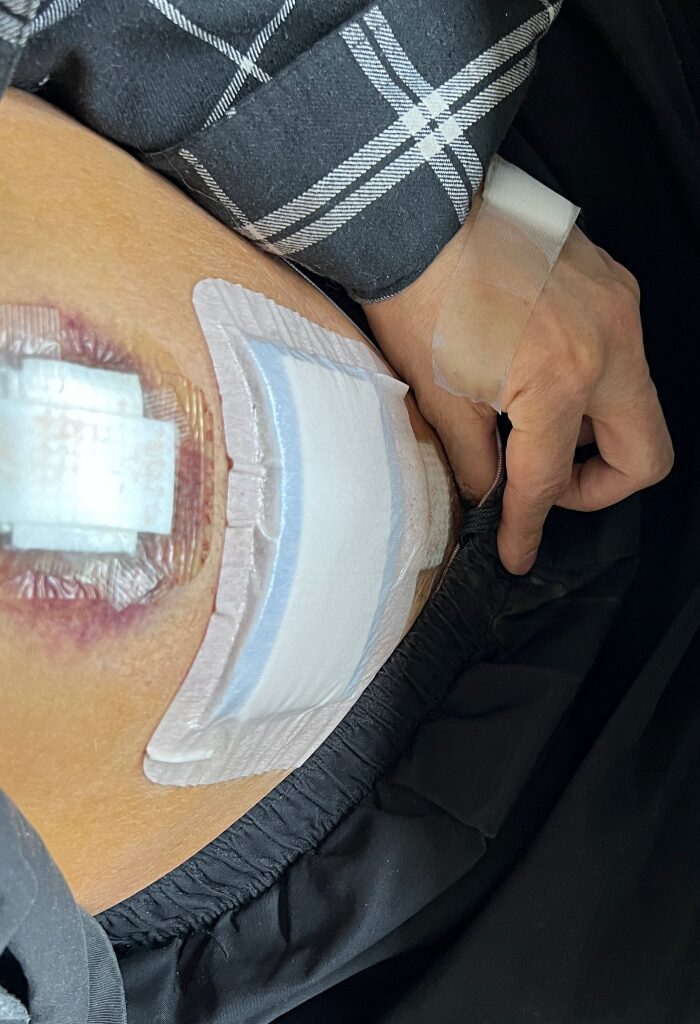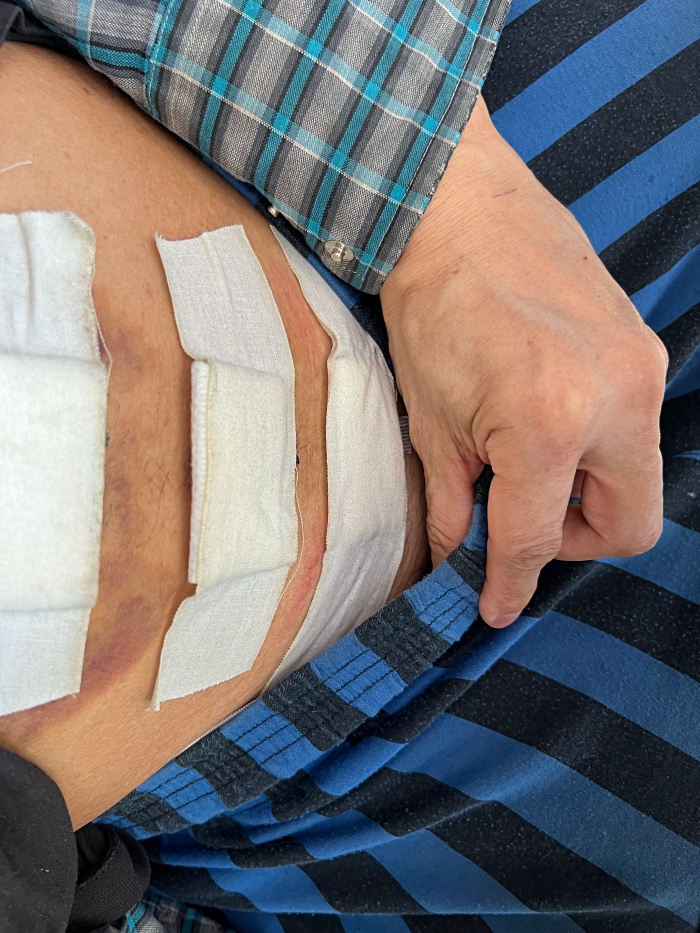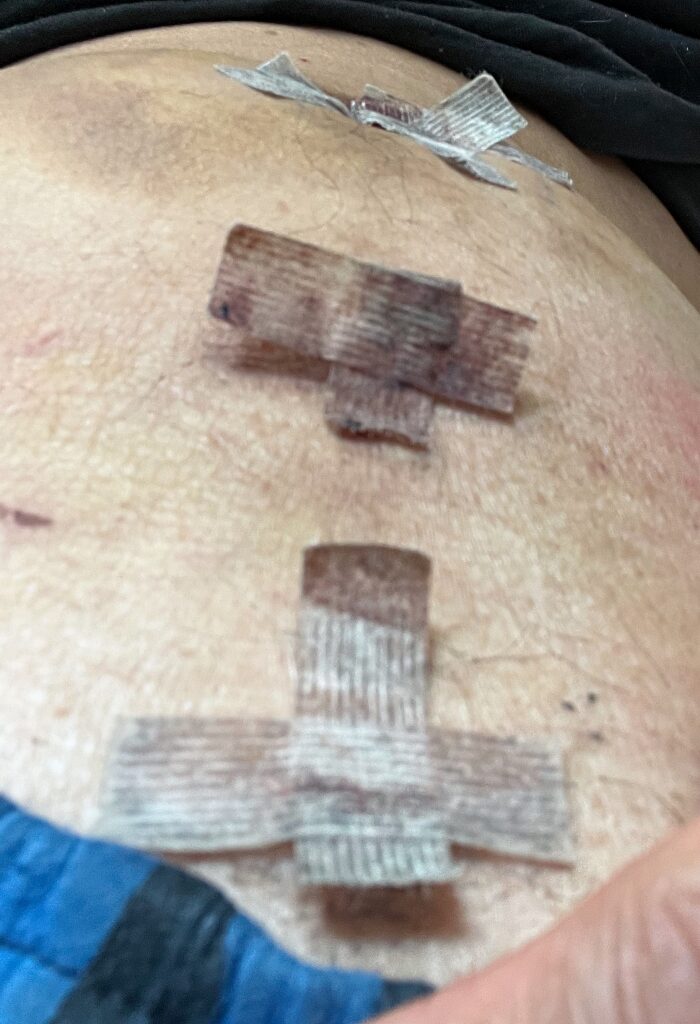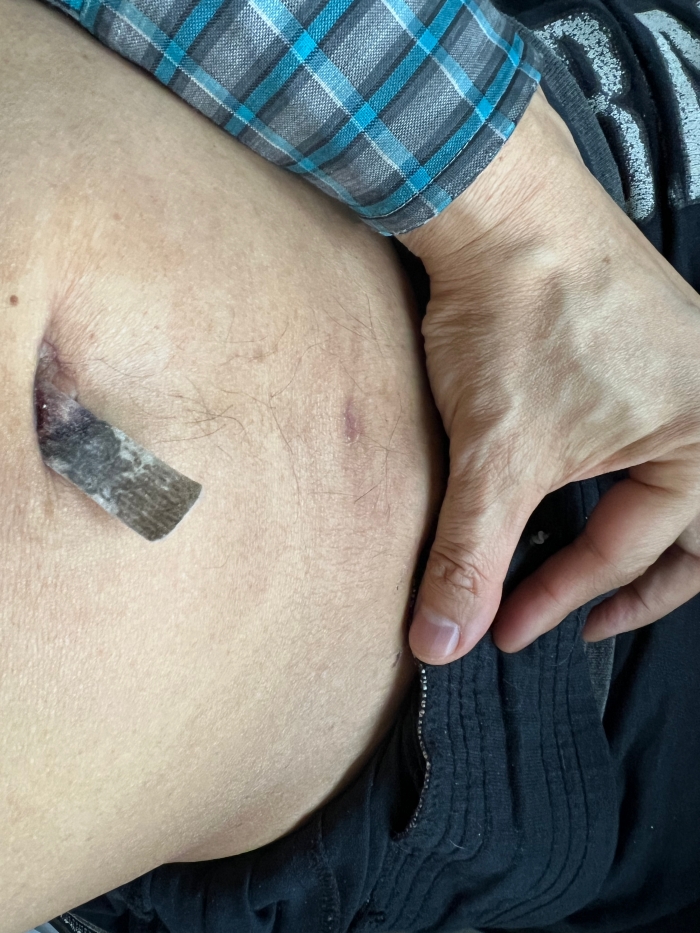
My Experience With Inguinal Hernia Surgery
I was diagnosed with an inguinal hernia by my urologist in September 2023 when I told him of this bulge near my groin area. He told me that while it’s not urgent, I should get it fixed eventually. I have no idea how I got this hernia as one day during last summer I just noticed the bulge down there and since I thought it was urology related, I brought it up to the urologist.
What A Hernia Is
A hernia is a hole in the abdomenal wall where part of intestine ends up sticking through it resulting in the bulge. In my case, this was not painful but each time I stood or sat up, the bulge would be there. When I lied down, the bulge would flatten out again indicating that whatever part of my intestine was sticking out went back inside my abdomen.
The reason why hernias should be repaired is over time there’s the potential of what is known as a suffocated hernia. This is when the part of my intestine sticking out remains sticking out without going back inside by itself. There’s a chance that this part gets trapped outside the abdomenal wall causing a lack of blood flow to that area of the intestine which is why it’s known as suffocated. This situation can be dangerous requiring an immediate trip to the hospital emergency room.
Here’s a video I shot after four weeks of my inguinal hernia repair surgery. It summarizes the main points I also wrote below.
Surgical Options For Hernia Repair
So obviously I did not want a suffocated hernia so did some research on the different surgical options for repair as well as checking the timeline for booking a surgery date with a general surgeon. As for surgical options, there’s a new robotic method available in some locations but for most areas, the two main general options are open surgery and laparoscopic surgery.
Open surgery is when the surgeon makes a big incision across the abdomenal wall to repair the hernia. Included within the general open surgery techniques is the world renowned Shouldice method. Unlike many hernia repairs, the Shouldice method does not use a mesh to cover the hole in the abdomenal wall. Instead, it involves pulling together the abdomenal tissue and using a special way of stitching everything back up. This is a good option for patients who don’t like the idea of having a foreign object like a mesh put inside them.
While it’s been reported that mesh can result in dislodging, this has shown to be a factor of the surgeon’s expertise and how the patient recovers. Allergic reactions have also been reported with mesh but this has usually been the case with those who are already immuno-compromised in some way. For me personally, I don’t have any issues about putting a foreign object inside me as I already have a metal screw in my right knee and I can’t feel it.
I would have access to the Shouldice Hospital where they do this type of surgery since I live two hours north of Toronto where they are located. But they require a minimum of three nights stay at their hospital since the Shouldice method is an open surgery which has potentially more pain, longer recovery periods and a feeling of the tugging inside since this technique involves overlapping tissues sewn together.
While the Shouldice method does have high success rates, I opted for laparoscopic surgery instead. Instead of a big incision opening me up, laparoscopic surgery would involve three smaller incisions; one for a camera to show inside me and two for surgical instruments. Laparoscopic surgery usually has less painful and faster recovery periods. In fact, it would be a day surgery where I could go home soon after I wake up in the recovery room.
Hernia Surgery Day
So after I had an initial consultation with my local general surgeon who saw an ultrasound I got to make a definite diagnosis of an inguinal hernia, we booked a surgery date for April 2024. In the meantime, I was allowed to remain active but being more conservative with heavy weights. I was even allowed to snow ski each day throughout the winter so I skied all season with a hernia which didn’t bother me. I bought a hernia belt to keep the bulge contained but it turned out that I really didn’t even need it since I didn’t feel my hernia even while skiing.
When my surgery day came, I reported to the hospital for my hernia repair using laproscopic technique with a mesh. It would be a six week recovery period where I would not be allowed to lift anything over five pounds since my surgeon wanted the mesh to hold.
The surgery itself was fairly easy. When I woke up in recovery, the nurses wanted to see if I could get up and walk after the general anesthetic. To my surprise, I was able to walk to the washroom unassisted and there wasn’t much pain felt. They gave me prescriptions for painkillers which I had to get filled at a pharmacy on my way home.
Week 1 Recovery
A major reason why I chose laproscopic surgery over open surgery was that I could go home the same day without having to stay overnight at the hospital. They did require that I had somebody take me home since I was not allowed to drive after surgery. So I hired a PSW (personal support worker) to come get me at the hospital and then stay at my home overnight to monitor my first night. This was actually a requirement from the hospital since they didn’t want me to fall especially on the stairs at home. I was thinking maybe I could have stayed one night at the hospital to recover from the general anesthetic but they didn’t have any beds available for me.
About an hour after I got home, I was just sitting on my living room sofa with my PSW and then I felt some wetness. When I lifted up my t-shirt, we saw blood oozing out from the middle incision as it was bleeding out. So my PSW had me go upstairs to lie down while she got on the phone with a recovery room nurse at the hospital.
She was told to change the main dressing but leave the steri-strips underneath which was holding the absorbable stitches together on. Then I had an ice pack placed on top as I lied in bed. Fortunately after about 30-40 minutes, the bleeding stopped so I didn’t have to go back to the hospital.
Although I didn’t have much pain, my entire abdomen was swelled up and bruised as shown in the photo at the top. You can see the three dressings over the three incision sites from the surgery. The middle one was the new dressing placed over the site that bled out. Things did feel a bit tender and tight from all that swelling which made me feel as if I was pregnant!
Although I was fairly mobile at home able to walk around and go up and down the stairs unassisted, I was moving around quite slowly. I was eating okay and spent most of the evening just socializing with the PSW as well as another one who came in to replace her for the overnight shift.
The first night was pretty tough for sleeping though since I had so much swelling that I could not sleep on my usual side position without discomfort. I had to try and sleep on my back with my knees raised on a pillow to minimize any tightness resulting from the inflammation. Also, my throat was quite irritated from the surgical air tube but this could happen from any surgery. I ended up getting only about three hours of sleep during my first night.
When the morning came, we verified that my dressings were dry so no further bleeding happened which was great. After breakfast, I had my PSW accompany me for a quick easy stroll outside since I know that healing would be faster if I was a bit active rather than lying down for hours. The walking would help increase blood flow to the surgical area to promote healing.
After my walk, I told the PSW that I was okay on my own from then on so I spent the rest of the week at home relaxing with a short slow and easy walk outside daily. Good thing I stocked up on groceries before my surgery day so I had everything I needed at home. In addition to the scheduled medications, I also put an ice pack on me for 15 minutes at a time several times per day to bring down the swelling and bruising.
The next night was much better as I had a full night of sleep thanks mainly to my throat becoming less irritated compared to the first brutal night. It was also after the second night that my bowel movements came back to normal as constipation is often a side effect of general anesthesia. I recall during my last knee surgery, I was constipated for five days but this time it was only two.
Week 2 Recovery
I did not dare take get the surgical site wet during my first few days during week 1 but towards the end of that week I decided to shower and change all of the dressings since the two covering the incision sites that did not bleed out where still the ones from the hospital. So the photo below shows the new dressings I put on for all three incision sites and you can see that the bruising has started to go down as well as some of the swelling.

By week 2, I was finally able to get in and out of my car which is a low seating Mustang. So now I’m able to drive around town to do some short errands but still couldn’t wear regular pants yet since the swelling that I still had made pants too tight and uncomfortable. Good thing I had sweat pants.
I had finished all the pain medication that was prescribed to me and I don’t think I even needed them to be honest since again, pain was minimal from this surgery. I was feeling no pain at all in week 2 with just a bit of tightness from the leftover inflammation. So I continued with the ice packs daily along with my daily walks which were also getting more comfortable.
Week 3 Recovery
At week 3 the main dressings came off and I decided that I no longer needed any over the steri-strips underneath. In the photo below, you can see the steri-strips that were over each of the three incision sites. The middle ones were darkened from the original bleed I had on day 1.

I was to leave the steri-strips on until they fall off by themselves which was fine by me. Now revealing more of the abdomen area, you can also see that pretty well all of the bruising as well as the swelling have disappeared by this time. I really felt that I was on the road to recovery as I reached the halfway point of the six week period.
Week 4 Recovery
Some of the steri-strips started to fall off by week 4 revealing the incision scars underneath. The photo below shows one of these incision scars which is the little dark line where the middle incision was (shown to the right of the steri-strips covering my navel area. My pants in this photo are covering the 3rd incision which was the one at the lower region and all steri-strips from that one also fell off.

I’m quite impressed with the laparoscopic surgery with not only the relatively short recovery time, minimal level of pain but also the incision scars which are barely noticeable. Despite the bleed I had on day 1, I’m still glad that I decided to go with laparoscopic rather than open surgery for my hernia repair.
As I write this, I’m heading in to week 5 and I think the challenges now is to test my patience since the only exercise I’ve been able to do is outdoor walking at a relatively good pace. I’m sleeping well, moving around okay and gastro-intestinal related things are back to normal. I’m just a bit bored of walking since I’ve been good at sticking to the rule of not lifting anything over five pounds. I’m even splitting up groceries into more bags than usual so that each bag is light as I don’t want to jeopardize the hernia repair.
I can’t wait to get on my rollerblades since it would be a better cardio workout and I get to train on my ski technique too (since inline skating can approximate skiing technique). But I’ll wait until I get the clearance from my surgeon first who should be making a follow up call to me soon.
I do recall during our initial consultation that I should be able to ease into my normal activities again after the full six week recovery period.

Thank you for sharing your recent hernia repair experience. I face the same kind of repair next month. Your account is encouraging. I too have chosen the laparoscopic mesh repair for the same reasons you describe.
You made a good choice Bruce. Just be conservative in recovery speed expectations during the first week than you will notice big improvements from that point on. Good luck with your hernia repair.